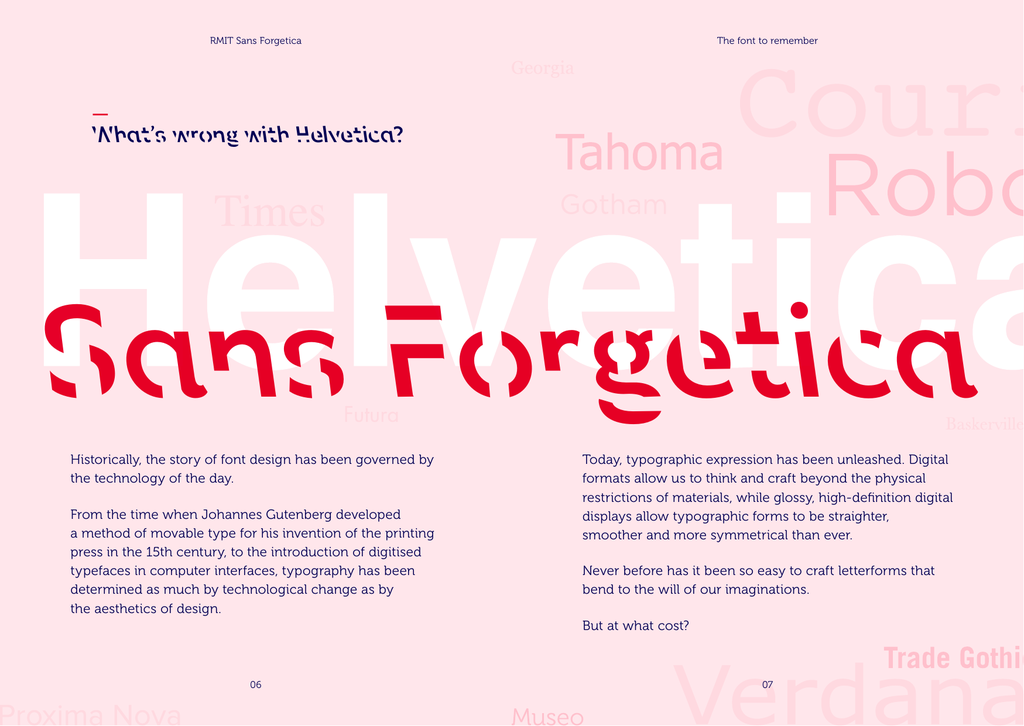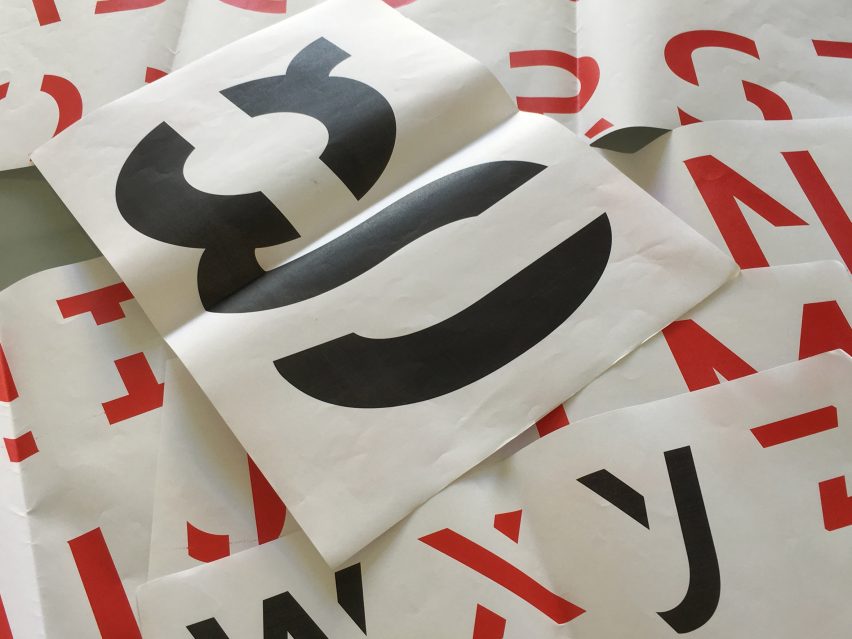Sans Forgetica, a font developed by researchers at Melbourne’s RMIT University, claims to be a font that assists in the development of memories from reading. Below are some images of the typeface.


I chose Sans Forgetica as my topic because I have incredibly mixed feelings. Sans Forgetica is, in my opinion, an equally gigantic step in the positive and negative direction for accessibility of students and differentially abled individuals.
Supposedly, the function of this typeface is to utilize the psychological principle of Desired Difficulty — utilized through adding strikethroughs, adding slants, and missing elements to the typeface to make it more difficult to read — to increase the amount of the text that is remembered. As best put by the creators themselves, “Faced with an unfamiliar set of characters, the mind seeks to complete the shapes, which slows it down. By dwelling longer on each word, the brain has more time to engage in deeper cognitive processing, which enhances information retention.”
Through a case study performed at the university where this typeface was created, it was found that amongst all test subjects, an average of 7% increase in memory retention was generated by the use of the typeface.
This font, while not utilized anywhere or commonly known about, stands as a massive step towards accessibility for those with retention deficit disorders and other learning disabilities. Interestingly, however,
I think it is incredibly difficult to say who this font would be good for, and who it would be terrible for.


My first thought seeing this typeface is that it would obviously be terrible for those with dyslexia, off the bat that’s obvious. However, upon further inspection, were this font to become standardized, (I have no grounds to make this statement other than stipulation) it may hypothetically have a positive impact, as these strikethroughs make each character EVEN MORE distinct from one another compared to what is typically possible with most fully legible typefaces. Or, maybe it’s just outright awful like my gut feeling tells me. It’s really difficult to say without more data.
My second thought is that this may actually be an incredibly advantageous typeface for those — like me — that have ADHD. By demanding an additional level of processing, this typeface may actually satisfy some of the multitasking needs of brains like mine when it comes to extended reading sessions. OR, it may just be outright absolutely terrible, and cause brains like mine to simply become distracted by the process of deciphering the text rather than actually reading it.
Again, I feel that this typeface is incredibly controversial. There are some groups that it is obviously terrible for, some groups that it may be incredibly good for, and a WIDE RANGE of differential abilities that it’s impossible to say whether it would be great or awful.
Regardless of all of that, I think more testing into this subject of differential typography could produce wildly interesting and beneficial data regarding how fully legible fonts could be developed for everyone as well.

